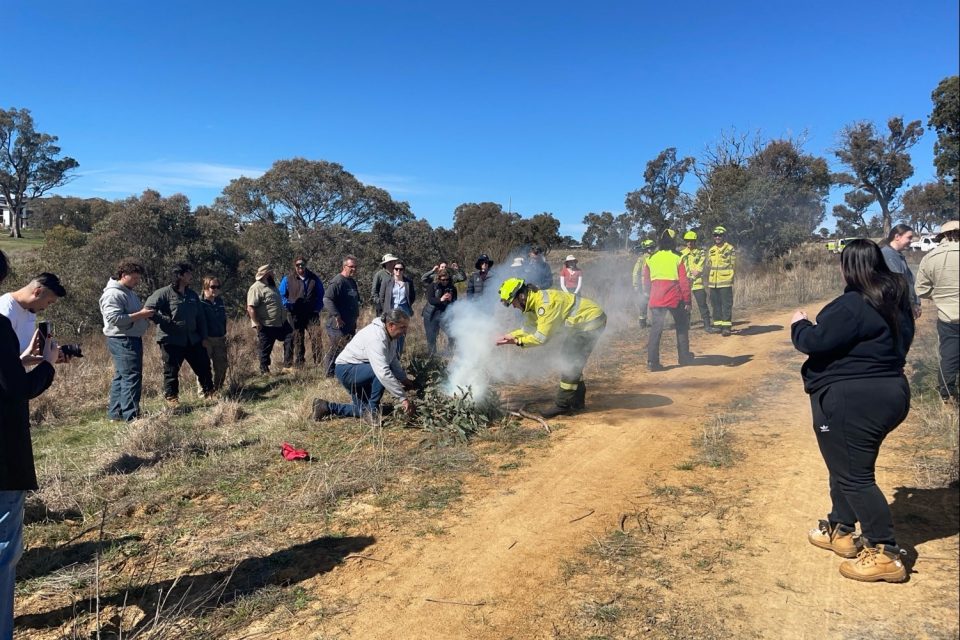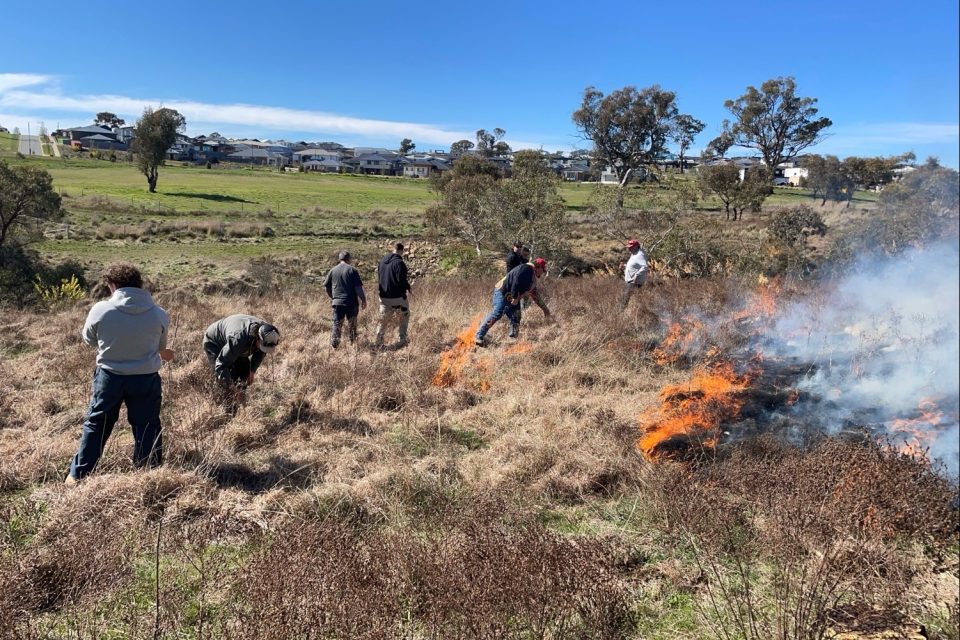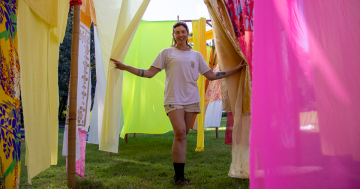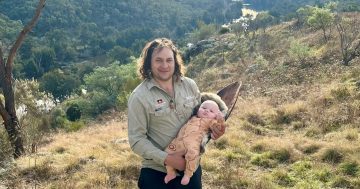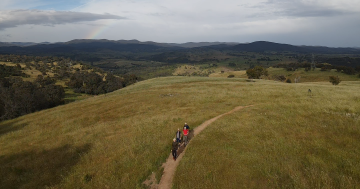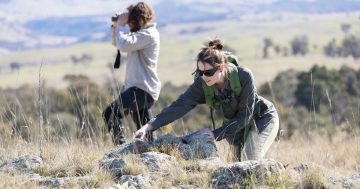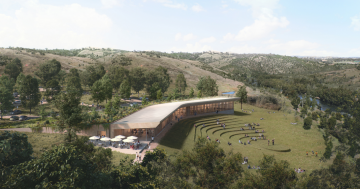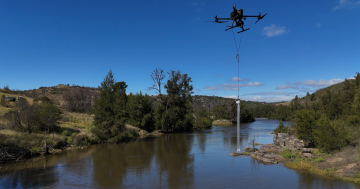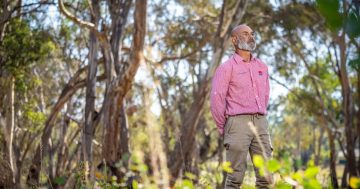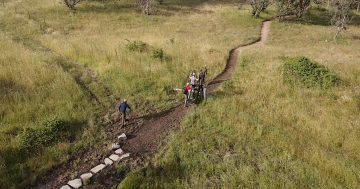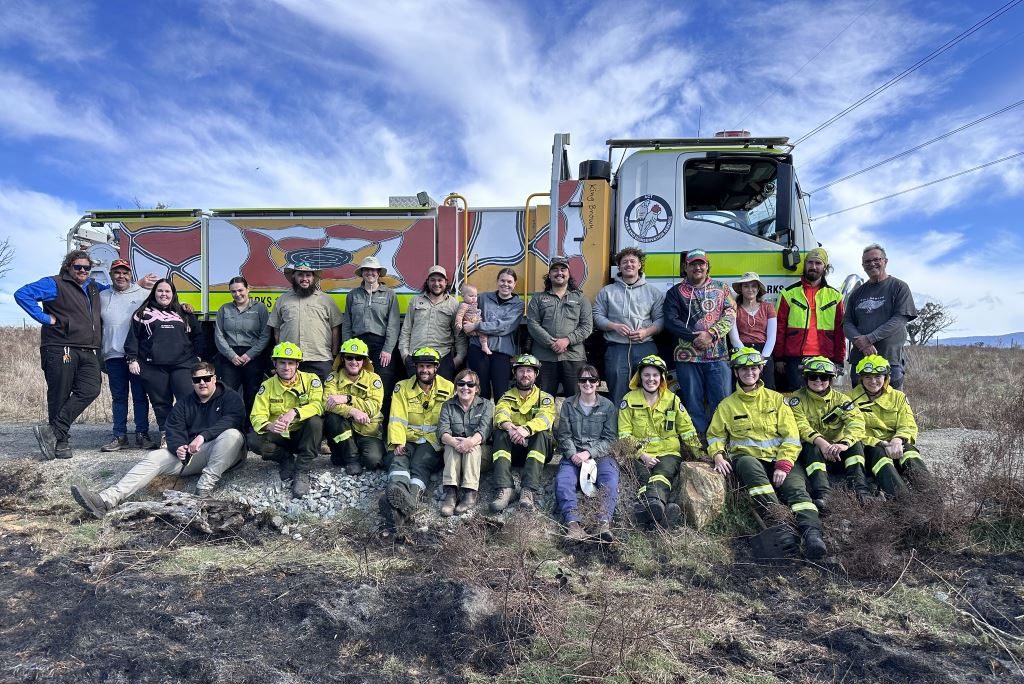
A passionate team gathers in Ginninderry’s conservation corridor earlier this year to carry out the area’s first official cultural burn. Photo: Ginninderry Conservation Trust.
A diverse group came together in Canberra’s north on a bright late-August day to share in traditions passed down for thousands of years.
The eclectic band of RFS and ACT Parks staff, Ngunnawal men and women, and Ginninderry Conservation Trust members successfully conducted the first official cultural burn in the Ginninderry Conservation Corridor.
Lighting the fire was a moment more than three years in the making, so to say energy in the air was palpable would be a heavy understatement.
Burn leader Tyson Powell is a Caring for Country ranger with the trust. He founded the Caring for Country program to foster traditional Indigenous land management in the corridor.
“Burning has been used for countless generations to manage the land,” he says.
“It’s about reconnecting Aboriginal people with Country and traditional ways of caring for it. Western beliefs see fire as a dangerous thing to be feared and avoided, but for us it’s an important tool used to cleanse, heal and bring new life.”
Cultural burning improves the land’s ability to support the many people and animals relying on it to thrive. The Indigenous fire practice has been used for more than 60,000 years to manage plant growth by burning away old fuel and encouraging new foliage to grow in its place.
“We burn in small patches close to the ground which keeps the overall temperature low and gives animals time to move out of the way,” Tyson says.
“There are far more invasive species in our bush and grasslands than many people think. Weeds from other countries haven’t evolved alongside fire like Australian plants, so cultural burns are a useful tool to prevent them from taking over.
“Lots of native plants actually need fire to germinate their seeds, so burns don’t just control weeds, they encourage new, stronger growth of our native species.”
The burn went well, something Tyson says will work towards Caring for Country rangers using fire as a regular management tool in the corridor.
Proud to stand in front of the ‘King Brown’ fire truck, which he painted and was named after his father, fellow burn leader and Ngunnawal man Adrian Brown says the importance of passing on cultural knowledge is powerful.
“I was taught by my father who was taught by his uncles about what to burn, what kind of fire to use and understanding what the land and animals need,” he says.
“The opportunity isn’t always there for Aboriginal people to go out on Country and perform cultural practices like this, but we need to continue teaching these traditional skills so they aren’t lost.
“So much has been lost already. Doing something powerful for your people that instils a sense of pride and connection to Country in the next generation is beyond important, it’s crucial.”
Visit Ginninderry for more information.




